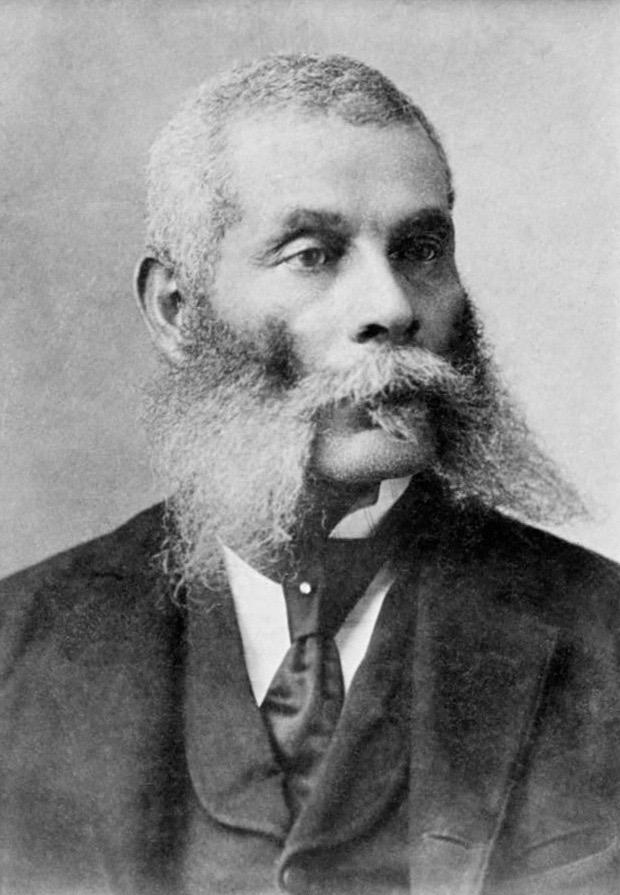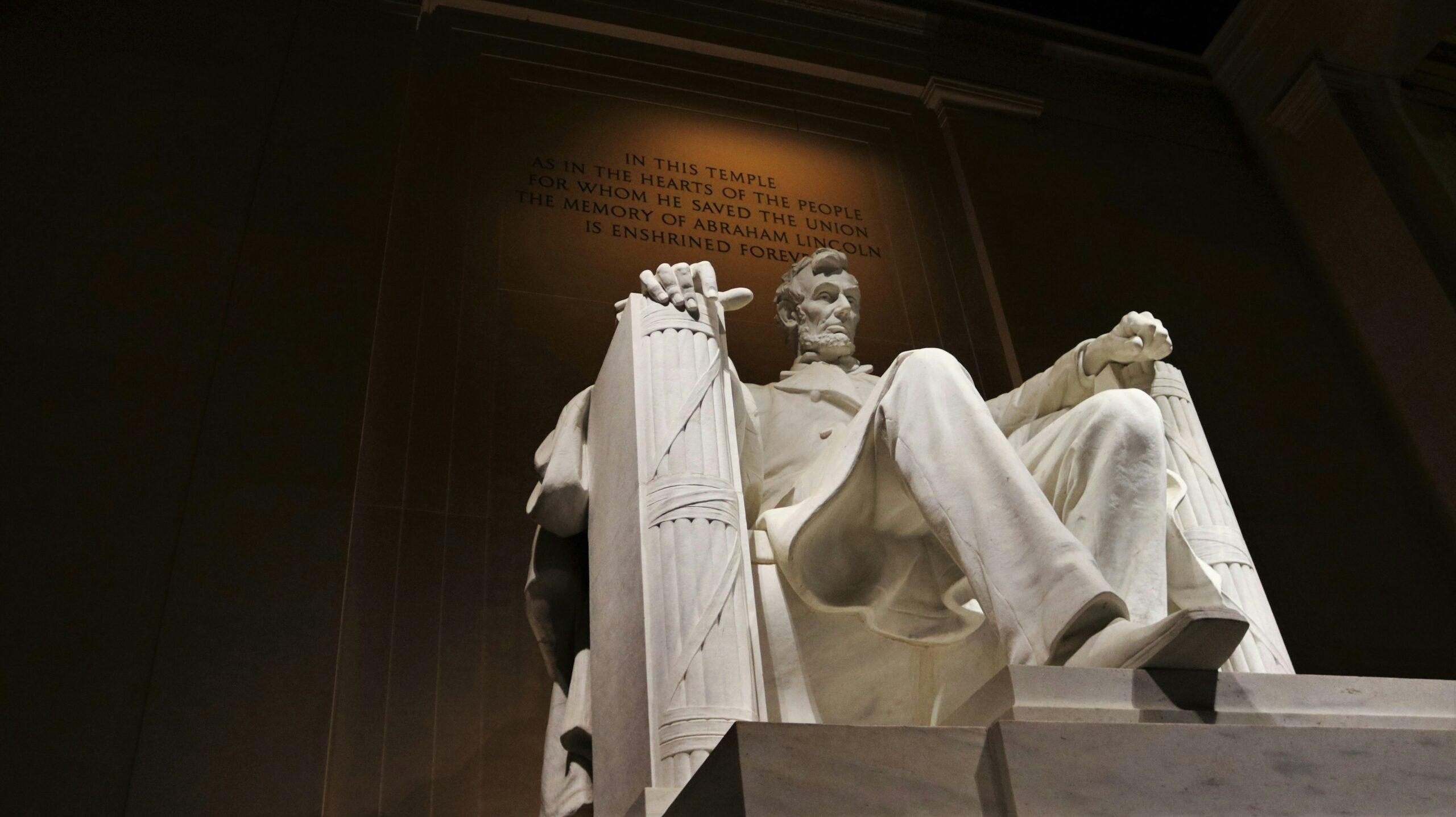OFF THE RAILS
HOW A DARING LOCOMOTIVE HEIST INSPIRED AMERICA’S HIGHEST HONOR

Recipient: Andrews’ Raiders
Branch: Army
Combat: Civil War
Would you willingly lace up your shoes and walk 200 miles in four days to steal a train?
As crazy as this scenario sounds, it actually happened. And it occurred at a critical moment in American history. During the Civil War, 22 Federal Army soldiers — famously known as Andrews’ Raiders — wrestled with whether they should, in fact, lace up their shoes and do the unthinkable. With a nation divided, they responded with courage, commitment, integrity, and sacrifice, despite facing personal risk and unknown outcomes. The Raiders’ courageous actions not only shaped the values behind the Medal of Honor but also set the stage for these brave, ordinary soldiers to demonstrate how deeply they loved their country by achieving the extraordinary.
The Great Locomotive Chase of 1862
Like most great stories, the tale of Andrews’ Raiders started with a hairbrained idea. In 1862, Army Major General Ormsby M. Mitchel formulated a plan to capture the Confederate stronghold of Chattanooga, Tennessee, to cut off access to the Mississippi and Ohio River valleys.
But there was a slight problem: the Confederacy could easily send reinforcement troops to Chattanooga from Atlanta, Georgia, via the railroad systems and overpower Mitchel’s troops.
James J. Andrews, a civilian scout and part-time spy, came up with an outlandish idea: what if Mitchel secured a group of volunteers who could steal a locomotive, cut off access to the Atlantic Railroad, and suspend enemy troops and supplies from reaching Chattanooga? After some discussion, Mitchel approved the mission, and on April 7, 1862, Andrews selected 22 volunteers from three Ohio infantry regiments and two civilians to complete the task.
The brave men switched to plain clothes, dispersed in groups of two and three, then slipped behind enemy lines. They only had four days to walk 200 miles just to get to the mission’s starting point at Marietta, Georgia. The men boarded the train at Marietta, but they would have to wait until it stopped at Big Shanty (present-day Kennesaw) to begin the perilous operation. Andrews had strategically selected Big Shanty’s station as the starting point because it lacked a communications center.
As morning broke on April 12, 1862, at Big Shanty, unwitting passengers and the train crew left the train called General unoccupied to enjoy a leisurely breakfast at the station. Seizing the opportunity, Andrews’ Raiders silently ungrouped most of the General’s cars. By 6 a.m., the Raiders were racing out of Big Shanty, having successfully captured the locomotive with several Confederate railroad men hot on their heels.
Aware that they were being chased, first on foot, then by train, Andrews’ Raiders gallantly pried up rails and cut telegraph lines as they moved closer to Chattanooga. Their pursuers — which included Anthony Murphy and William Fuller — followed close behind, picking up additional support and switching trains as needed.
At one point, the General lost precious ground when another scheduled train was allowed to pass. However, Andrews persuaded the station master to let the General go by sharing a made-up story about carrying ammunition that the troops needed at Chattanooga. A similar delay occurred at the Kingston junction, where the General was forced to wait and allow the other train to pass. The Raiders waited one hour while their pursuers gained valuable ground.
Finally — and without any time to spare — the General left the station, just as the Confederates pulled up. The railroad men — local civilians — switched trains, keeping up a ruthless pursuit until they were stopped by missing tracks that Andrews’ Raiders had uprooted. Fuller and his men then followed the General on foot until they commandeered a train named Texas to continue the chase. To avoid losing time, Fuller conducted the Texas in reverse, quickly picking up speed.
Realizing they could no longer cut wires or tear up railroad tracks with the Texas so close behind, Andrews’ Raiders deserted the General only 18 miles outside of Chattanooga, and ran for their lives. Within about two weeks, though, all the men were captured. Although Mitchel’s secret mission would fail to reach fruition, its legacy has been cemented in history forever.
Honoring Ordinary Citizens
Shortly before Andrews’ Raiders stole a locomotive, President Abraham Lincoln signed a bill into law — what we now know as the Navy Medal of Honor. The Medal incentivized soldiers to go above and beyond the call of duty on the battlefield. A mission’s miserable failure or overwhelming success was irrelevant. Rather, the medal would represent how far a soldier was willing to go — and how much they were willing to sacrifice — for their comrades, their country, and their fellow citizens.
On February 15, 1862, a bill was introduced to create the Army Medal of Honor. A few months later, President Lincoln signed legislation to lawfully recognize the Army Medal on July 12, 1862. Andrews’ Raiders were the first soldiers to ever receive the Medal of Honor.
Who Were The Raiders?
After being captured, the Raiders faced their fates. Andrews was hanged in Knoxville, Tennessee, along with seven other valiant men, who were all found guilty of “acts of unlawful belligerency.” Eight of the Raiders successfully escaped, while Jacob Parrott and five other men were held as prisoners of war. Eventually, Parrott and the others were released in a prisoner exchange.
A year later, on March 25, 1863, Secretary of War Edwin Stanton awarded the Medal of Honor to six of the remaining Andrews’ Raiders. Jacob Parrott was the first soldier to ever receive the Medal of Honor. The complete list of Raiders who were awarded the Medal of Honor is as follows:
- William Bensinger
- Wilson W. Brown
- Robert Buffum
- Daniel A. Dorsey
- Martin J. Hawkins
- William J. Knight
- Elihu H. Mason
- Jacob Parrott
- John R. Porter
- William H. H. Reddic
- Samuel Robertson, executed as a POW
- Marion A. Ross, executed as a POW
- William Pittinger
- John M. Scott, executed as a POW
- Philip G. Shadrach, executed as a POW
- Samuel Slavens, executed as a POW
- James (Ovid) Smith, caught before reaching Marietta, GA
- George D. Wilson, executed as a POW
- John A. Wilson
- John Wollam
- Mark Wood
However, it would take decades for every Raider to receive their Medal. Due to an oversight, Private George D. Wilson and Private Philip G. Shadrach’s Medals were delayed by more than 150 years, but they were posthumously awarded their Medals of Honor on July 3, 2024.
More than a Medal
Today, the Medal embodies six values: courage and sacrifice, commitment and integrity, citizenship and patriotism. Centuries after the Medal’s inception, these values continue to inspire servicemembers and visitors at the National Medal of Honor Museum in Arlington, Texas.
Plan your visit today!
Stay Informed with the Latest New
From groundbreaking announcements to exclusive stories, explore more updates from the National Medal of Honor Museum. Browse our latest press releases and articles to stay connected with our mission and milestones.

A Brother's Corageous Sacrifice
Nov 22, 2024
Griffin Institute Partners with Houston Texans
Nov 22, 2024